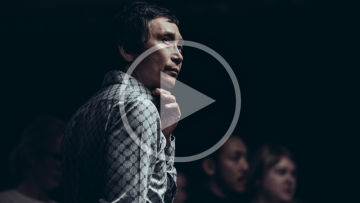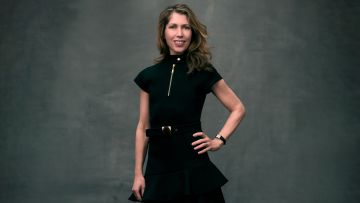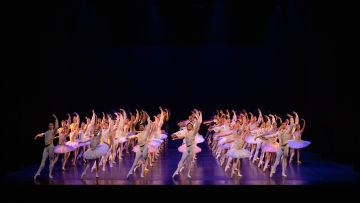Dancing for a Positive Change

Erica Rose Jeffrey has always been interested in how dance can be paired with social change, and the possibilities and opportunities it provides for all members of the community.
“When we add other forms of expression to our vocabulary, such as movement, it allows us to experience and generate change, big and small,” she says.
“Dance as an embodied expression allows us to explore our own identities as an individual, as well as a community.”
Erica Rose is the Director of Dance for Parkinson’s Australia and a Teaching Artist for Queensland Ballet’s Dance for Parkinson’s program. In both these roles, she has witnessed first-hand how dance can create positive change for those with Parkinson’s Disease.
For Mardi Barker, these classes provided her with support during an isolating stage in her life. Shortly after being diagnosed with Parkinson’s Disease, she heard about Dance for Parkinson’s on a television program.
“I attended by myself the next Saturday and was warmly welcomed by everyone. I have been turning up regularly [since then]. I feel the teachers and volunteers are now my friends,” says Mardi.
Queensland Ballet’s Dance for Parkinson’s classes were launched in 2013 as a pilot research study, the first of its kind in the Australian dance-research space. In collaboration with The University of Queensland and Queensland University of Technology, it studied the benefits of dance and physical movement on patients with Parkinson’s Disease.
“The initial pilot study determined that these kind of community classes are taught as a community art initiative, but also have proven therapeutic benefits, including physical, cognitive and social,” Erica Rose says.
The research report from the 9-month pilot program determined that those who regularly attended classes developed an improved functional mobility while dual tasking, as well as an increase in their communication and emotional well-being.
Now in its eighth year, Queensland Ballet’s Dance for Parkinson’s classes run every Saturday morning. In addition to teaching choreography and encouraging regular creative movement, they provide participants with the opportunity to learn more about the creation of a ballet from the studio to the stage.
“We often link our classes to performances that Queensland Ballet are doing. This provides participants with a greater awareness and understanding of ballet, movement sequences and musicality,” says Erica Rose.
“A few years ago, we taught a selection of choreography from Romeo and Juliet during the Dance for Parkinson’s classes and some of the participants went to see Queensland Ballet's production of it afterwards so they could make the connection. It was really powerful.”
While dance has a proven benefit on the motor and cognitive abilities of those with Parkinson’s disease, the classes have also created a profound sense of community for the participants and Teaching Artists. This is something Erica Rose notices every time she walks into class.<
“It is so special to witness the friendships that are formed after class, and to catch our participant’s excitement when they make that connection to the broader world of ballet,” she says.
However, those moments where they gain confidence in creating their own movements are what truly resonate with Erica Rose.
“I would say one of the highlights for me is when participants start to feel confident and experiment with their own movements, when they perform their own interpretation of a dance concept we have explored,” she says.
She particularly recalls an interaction with a Dance for Parkinson’s participant, who told her how the classes made her feel invincible and comfortable in her own skin.
“This participant said to me, ‘ageing is difficult, ageing with Parkinson’s Disease is very difficult. But when I come to these classes, I can be whoever I want to, and it gives me freedom’.”



